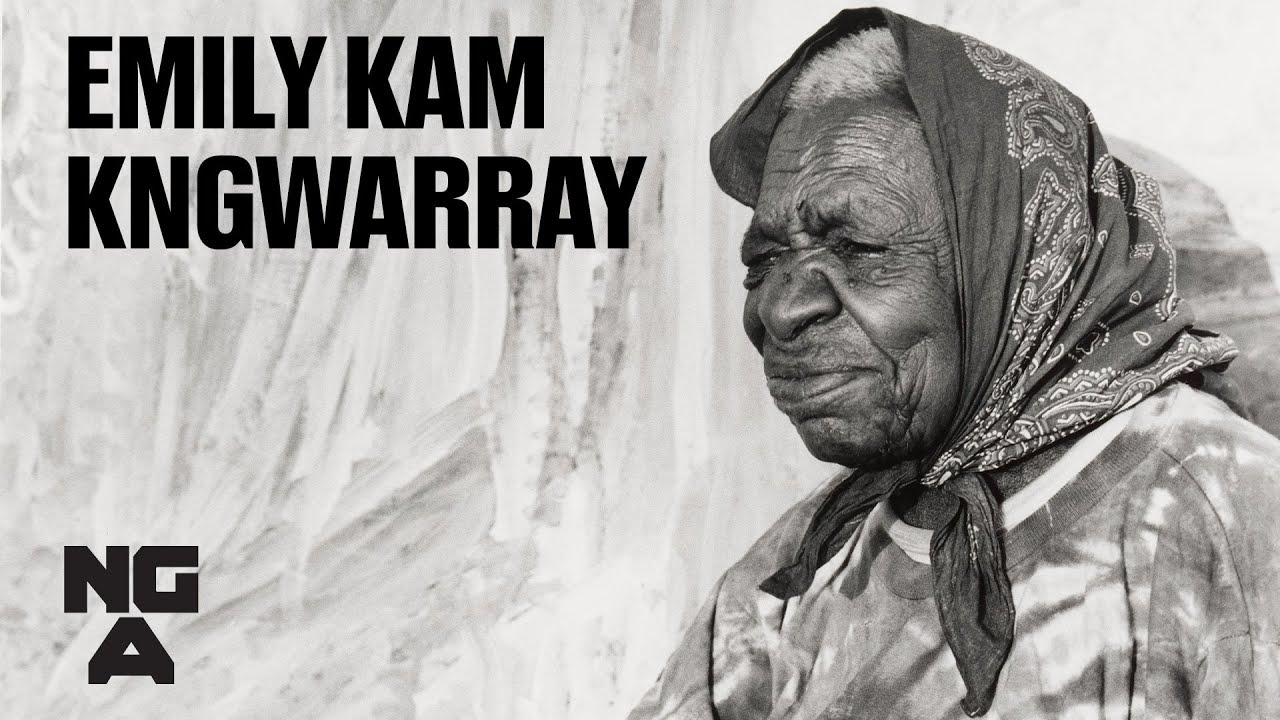
Robert Draws – Emily Kam Kngwarray has captured the attention of Europe through a groundbreaking exhibition now being held at Tate Modern. This marks the first major European showcase for the late Aboriginal artist, whose works have long been celebrated in Australia. Kngwarray’s paintings, filled with dot and dash patterns, offer not just aesthetic beauty but a deep cultural voice rooted in the Anmatyerr people’s traditions. Her pieces challenge conventional figurative styles, opting instead for abstraction that pulses with ancestral memory. The Tate Modern’s initiative is seen as a major recognition of Indigenous artistic expression and brings new attention to Australia’s First Nations creativity. The exhibit’s opening drew crowds and critical acclaim, not only for its powerful visuals but for the emotional narrative embedded in every brushstroke. Emily Kam Kngwarray’s name now echoes beyond deserts and remote communities into global art conversations.
The works of Emily Kam Kngwarray reveal an intensity of spirit and cultural pride rarely seen in such scale. At Tate Modern, her signature patterns of dots and lines blanket entire canvases with rhythm and life. Emily Kam Kngwarray’s Alhalker Suite stands out with its vivid hues and dense composition, offering a sensory immersion that honors her birthplace and spiritual ties to the land. The suite presents a bold visual statement that not only demands attention but also invites interpretation. Audiences are mesmerized by the harmony of chaos and order her paintings achieve. Her pieces are not just artistic artifacts but spiritual documents mapping sacred geography. While much of the attention centers on her visual style, it is the underlying storytelling that makes each painting resonate. The European audience is discovering that every mark Kngwarray made held meaning far beyond the visible.
“Read about: Unbelievable! 98-Year-Old Lois Dodd Finally Gets the Global Recognition She Deserves”
Emily Kam Kngwarray hailed from Utopia, a remote region in Australia’s Northern Territory, where artistic traditions are passed down through generations. Her rise from a small desert community to global acclaim is a testament to her unmatched talent and the power of Indigenous storytelling through art. This exhibition at Tate Modern symbolizes more than artistic achievement—it represents a long-overdue platform for Aboriginal voices in Western art institutions. Visitors are gaining insights into the complexity of Aboriginal identity and worldview, often misunderstood or overlooked in international spaces. Although Emily passed away in 1996, her legacy continues to grow, inspiring young Indigenous artists to explore and express their roots through modern mediums. Her posthumous recognition in Europe marks a significant cultural shift, showing that great art transcends borders when it is shared with respect and authenticity.
Much of Emily Kam Kngwarray’s art is driven by her role as a senior woman in her community and the spiritual responsibilities that came with it. As such, her paintings are not only visual representations but also reflections of gendered power in Aboriginal culture. The Tate Modern exhibition gives overdue spotlight to how Indigenous women contribute to cultural preservation through artistic channels. Each composition is informed by ceremonies, seasonal cycles, and stories passed through matriarchal lines. Her contribution is especially critical in a global art scene still catching up with the recognition of non-Western female artists. By highlighting the feminine essence in Kngwarray’s creations, the exhibit not only honors her but challenges the existing paradigms of art appreciation. It creates space for dialogue about diversity, gender, and respect for Indigenous epistemologies. Her work speaks to global audiences about nurturing, strength, and spiritual depth rooted in land and ancestry.
As visitors exit the Emily Kam Kngwarray exhibition, they carry more than admiration from Tate Modern. They leave transformed by witnessing cultural strength through Emily Kam Kngwarray’s powerful visual stories. Museums across Europe will explore her legacy in programs, exhibitions, and educational discussions. Teachers will introduce her artworks to students learning about Indigenous knowledge and global creativity. Kngwarray’s bold style now shapes contemporary art discussions with authenticity and deep cultural meaning. Art critics now embrace her techniques as key innovations in modern expression rooted in ancient traditions. Emily Kam Kngwarray connects continents through her work, uniting old traditions with today’s art conversations. Audiences see her art as a link between ancient knowledge and global recognition of Indigenous voices. The exhibition inspires Indigenous artists to stay true to their stories without altering their identity.
Curators find confidence in presenting artworks that celebrate original narratives and cultural integrity. This moment redefines global art by promoting diversity through recognition, not through cultural blending. The world now sees that true global art values inclusion, not sameness. Emily Kam Kngwarray’s vivid patterns speak directly to hearts and minds in a new cultural space. Her vision travels across borders and resonates in unexpected, powerful ways. Every brushstroke carries wisdom, strength, and timeless beauty from her homeland. Audiences stand still before her work, feeling its message beyond language and nationality. Emily’s art invites reflection and respect for cultures rooted in land and tradition. Her legacy opens paths for many others who share stories through patterns, color, and connection. She doesn’t just belong in art history—she helps rewrite it with pride and purpose. Emily Kam Kngwarray echoes across Europe, leaving behind color, clarity, and cultural courage.